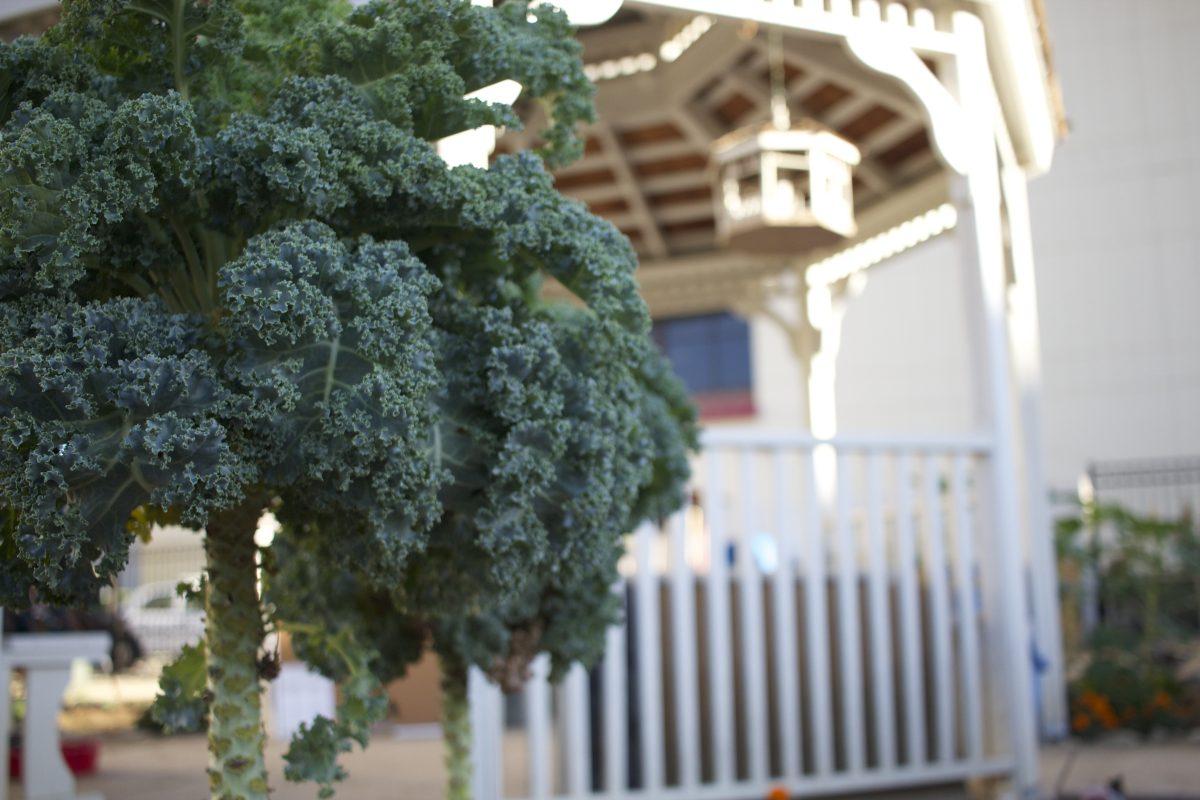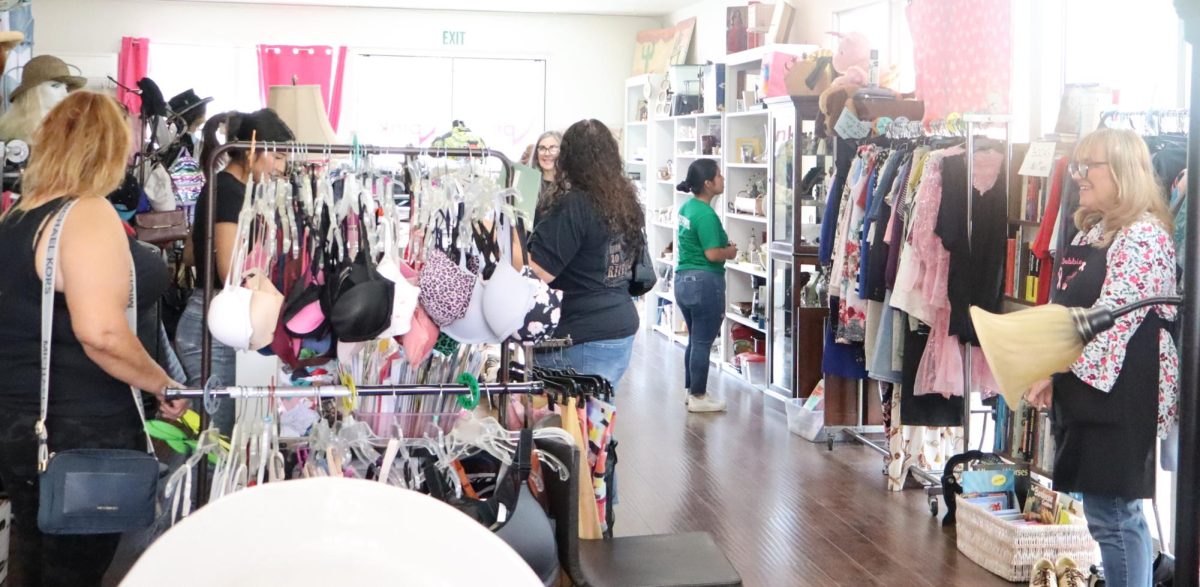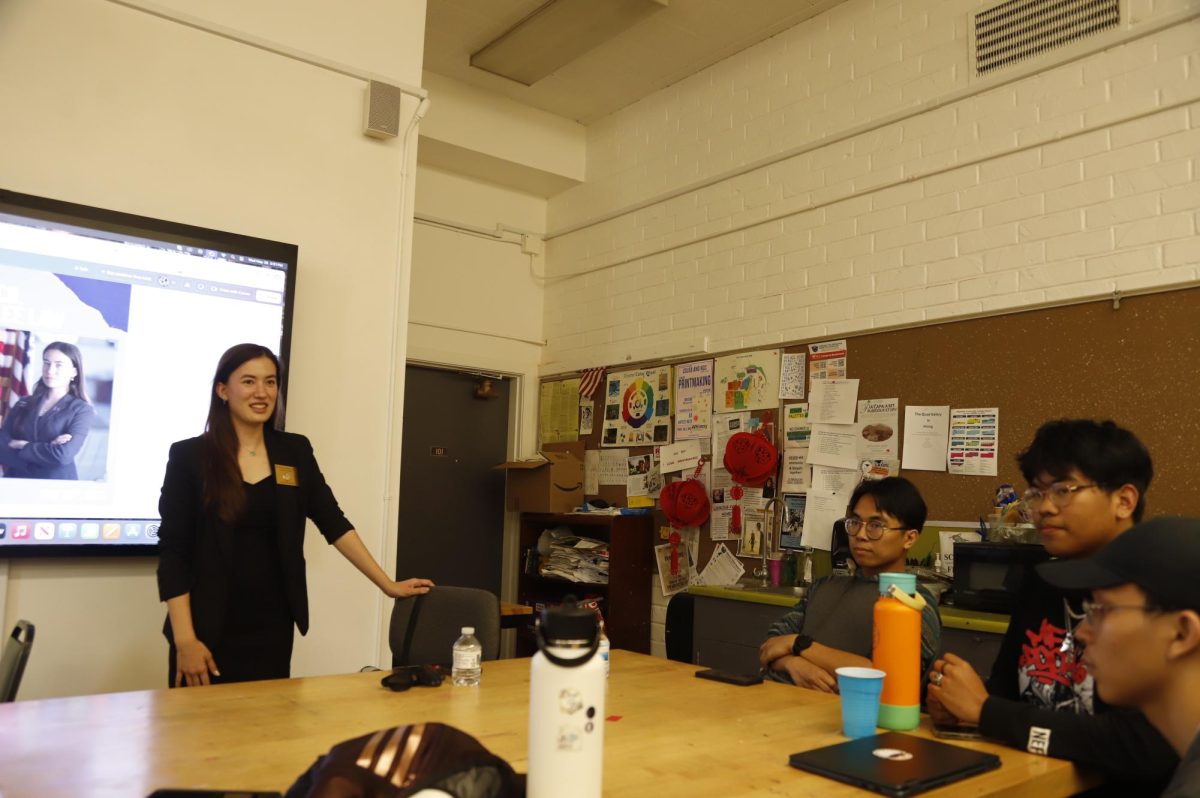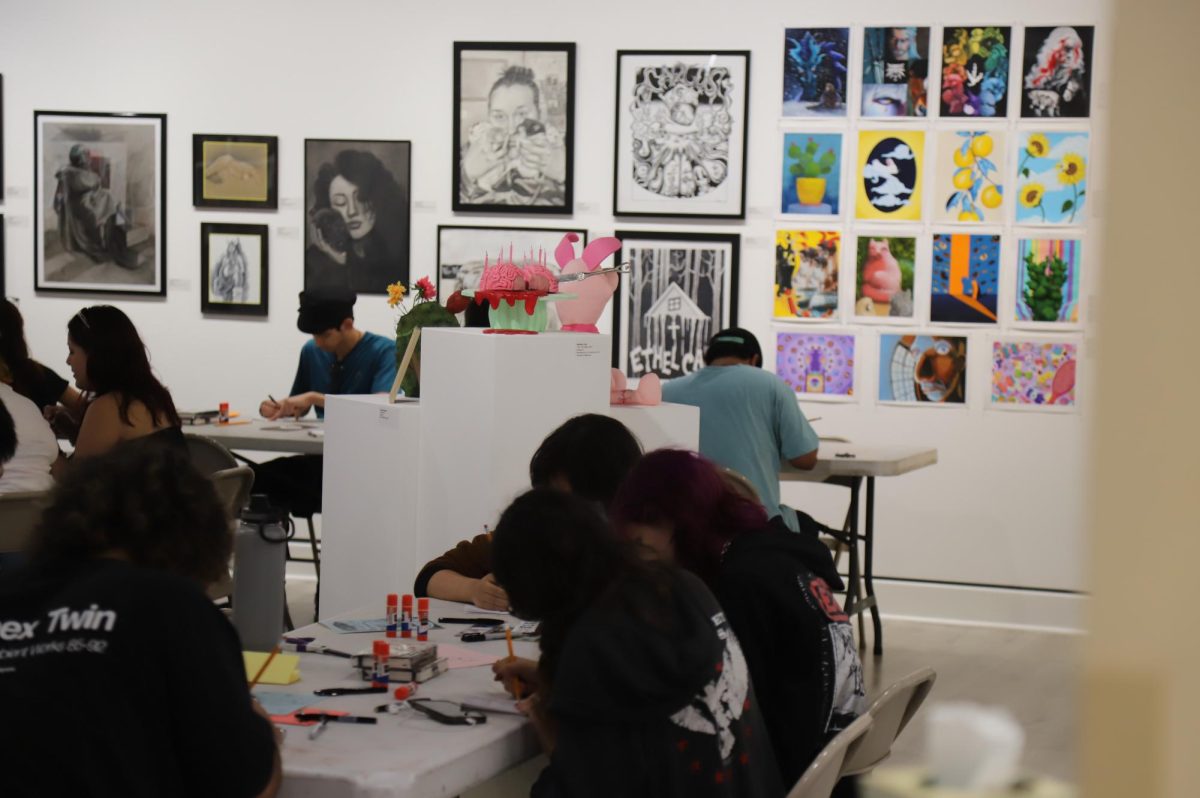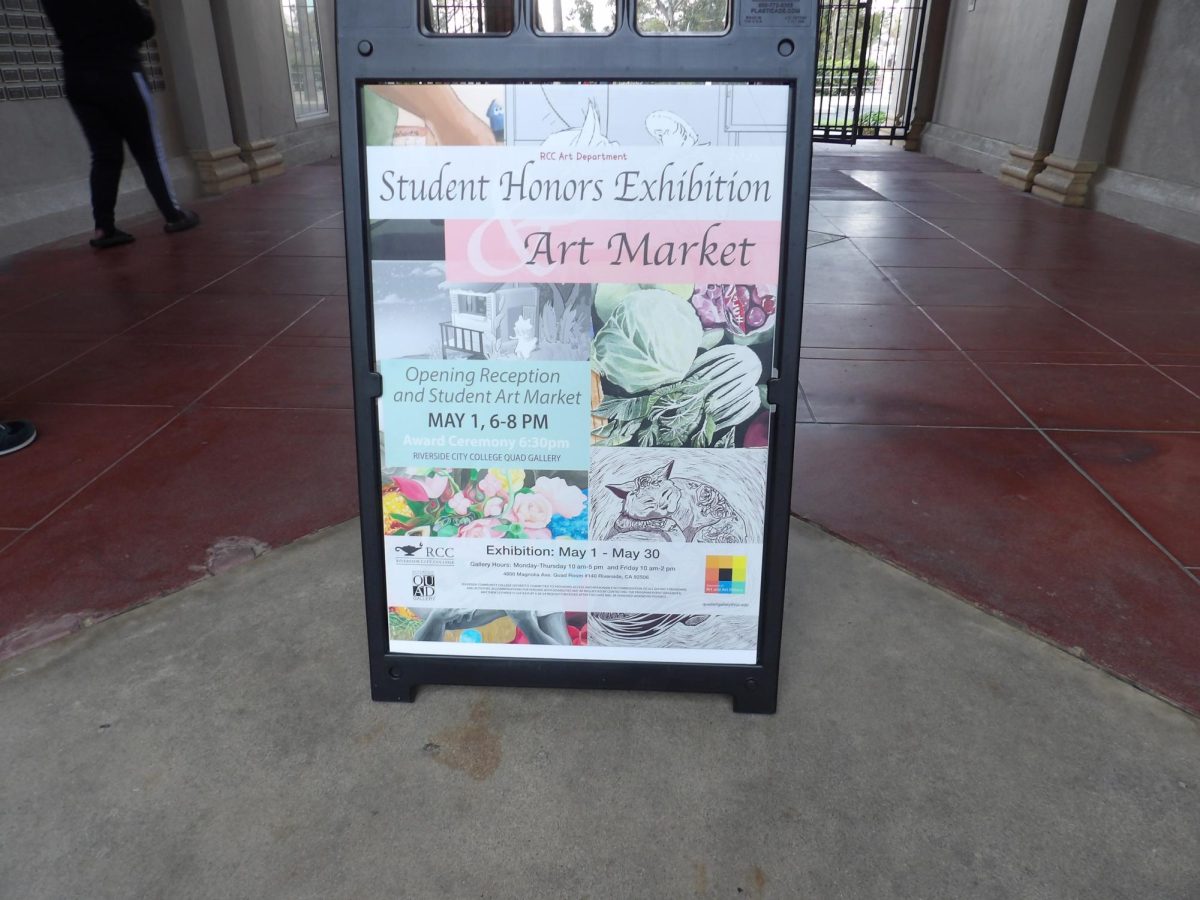Written by Brooke Cary
Cool, crisp air and dew-drizzled dirt welcomes garden workers at the start of their 7 a.m. shifts tending the community garden at Riverside City College.
There’s something beautiful about working the ground to bring to life a nourishing commodity. Each week on Tuesday, Thursday and Sunday mornings, student volunteers come together to do just that.
The volunteers participate in tending for the garden by fertilizing, weeding, planting and harvesting organic crops from the community garden at RCC.
Basil, beets, broccoli, brussel sprouts, cauliflower, carrots, celery, cilantro, garlic, kale and lettuce among many other nutritious vegetables grow in the garden during the fall and winter season.
The vision for RCC’s garden started just over two years ago, when a few curious students in an environmental club, now called the Sustainability Collective, inquired about growing fruits and vegetables in a garden on campus.
Preston Galusky, professor of environmental science at RCC, assigns credit for the garden idea to his former student Matt Rothenberger, who still keeps in touch with Galusky from time to time.
After the club brainstormed the idea, Galusky took initiative and spoke to RCC faculty and facilities management about the possibilities of clearing a garden plot.
At first, Galusky and his students were not given a flat-out ‘no,’ but staff weren’t exactly jumping to make it happen.
There were roadblocks and a period of waiting, since the garden plot area was at that time a construction base for the school’s new building plans near the math and science building.
There was also some concern about upkeep, according to Galusky. RCC Professor Virginia White was the first to back the idea, which helped provide substantiate the petition.
In December 2012, students volunteers “broke ground,” and were allowed to prepare the soil for the school’s brand-new garden. Every week since, student volunteers have sowed and reaped the benefits of gardening.
Individual plots were initially formed in the garden and students could either volunteer extra hours or pay a small fee to own, manage and harvest from their own personal plots.
This way, students could harvest the entire crop from that one area, rather than dividing the crop between laborers.
This fall, however, caring for and harvesting from the garden has become more of a community effort.
Instead of individual students bearing responsibility for an entire plot, there are now many community plots within the garden which are looked after by the 10-15 volunteers who come at least once weekly, according to Tonya Huff, RCC professor who became the new community garden manager in August 2015.
“We found that a lot of students on campus don’t have gardening experience. They don’t really feel comfortable tackling a whole plot themselves and being responsible for a whole plot,” Huff said.
Both Galusky and Huff agreed that the community garden plots are generally given more frequent care and yield a larger crop. There are a few individual plots in the garden, but most of the plots have become community growing areas.
To give an idea of how much the 70 ft. by 117 ft. garden yields, Huff explained the harvested crop in the span of three days.
On Sunday, Oct. 25, “volunteers harvested five big bags of lettuce, a couple big bags of other greens and a few bunches of radishes.”
Just two days later, the volunteer group harvested again, this time collecting two more big bags of lettuce, a big bag of mustard greens and two big bunches of radishes. “And this is with things just starting to produce,” Huff added.
As the garden continues to develop, the hope is to model RCC’s community garden after UC Riverside, where the community garden supplies the school’s cafeteria, making organic fruits and vegetables directly available for the students on campus.
“I think that would be the ultimate goal of that garden. It would be to actually find a local market for it so that we take the food-based footprint and lower it by just growing it here, you know,” Galusky said.
RCC students could benefit tremendously from access to locally grown and organic fruits and vegetables if they were sold in the cafeteria.
Some students have even come to volunteer in the garden because of “doctor’s orders,” to eat more nutrient-rich vegetables like Kale, according to Galusky.
Eating healthy is expensive already, but eating organic fruits and vegetables can be exceptionally pricy. Growing food locally could cut the price of food transportation, too.
“There’s a lot of infrastructure and a lot of waste that goes into tran¬sporting things all over the planet just for our convenience,” Galusky said. “Riverside has got a fantastic climate for growing food, so the garden is, for me, part of the solution.”
One of the biggest roadblocks to selling produce to the cafeteria now are the state health codes and requirements to abide by. It’s a big job to first, know everything that is required and another big job to follow through.
An example is the composting type used in RCC’s garden to fertilize and prepare the soil. Rather than using the home-grown compost which is readily available, RCC would be required to import an approved compost to fertilize the plots that would be used to sell food to the cafeteria.
The plots would also have to be re-set with rodent wires, among other preventative care requirements.
Many things are in the works for the community garden, but the primary focus remains in allowing students to come together and learn, work and grow together.
Alysa Carrillo, student mentor for the garden hopes that students at RCC become more aware of the garden, its purpose and the invitation to come and join in the collaboration of growing things.
“Nobody needs to know anything. You can be like, ‘I’ve never touched dirt before,’ and still come and grow things here.” said Carrillo. “Dr. Huff and Preston are just really good about teaching you.”
Carrillo is working on spreading the word about the garden to high school students and the Riverside community to get more people involved. “It’s just really fun,” she said.

